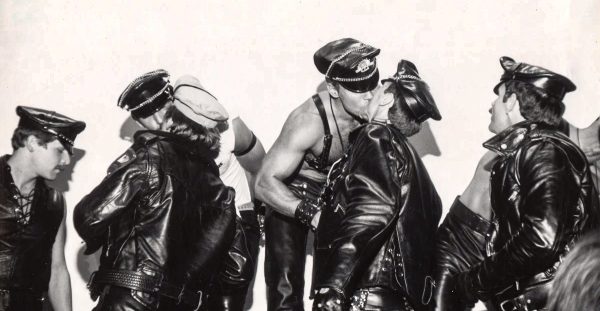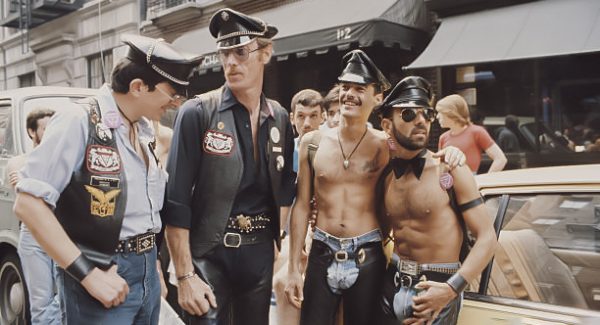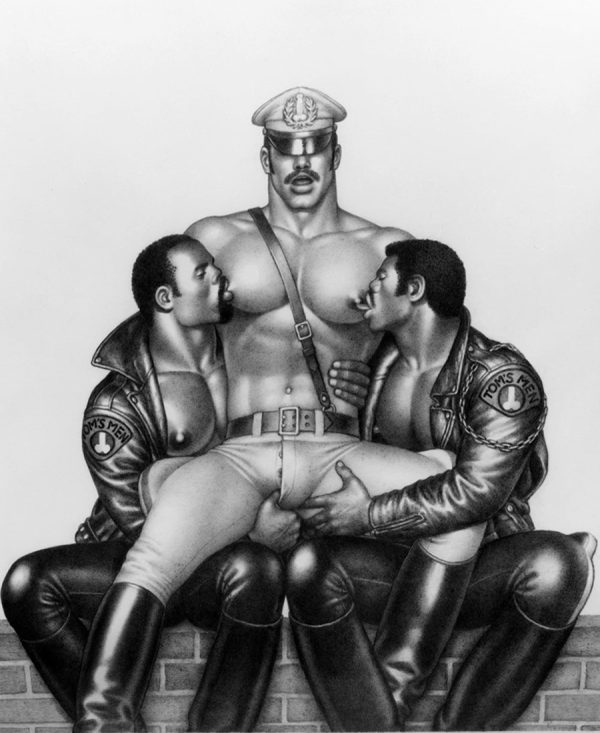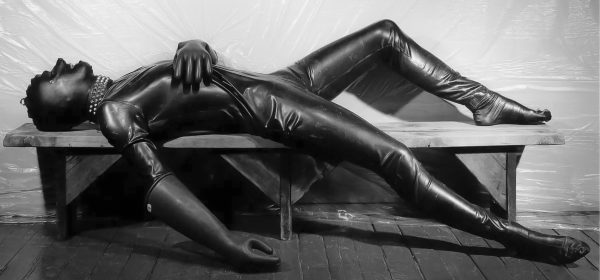The appeal of leather and latex for men goes beyond making a fashion statement. Latex and leather are some of the common materials manufacturers use to make fetish products. From riding crops, whips, straps, and muzzles to collars, there is a high chance that your favorite BDSM toy traces its creation to a leather, latex, or PVC material.
The BDSM community comprises people with various sexual interests and fantasies. Whether you derive sexual pleasure from humiliation, strangulation, smelling salts, or becoming a four-legged ball of fur, BDSM has everything your little mind can imagine.
The BDSM community is one of the few groups that provide a safe and non-judgmental place where men, especially in the gay community, can explore their sexual identity and sexual fantasies.
Unfortunately, not everyone has a sex-positive attitude toward kinks and fetishes. While some societies have a liberal approach toward non-traditional sexual practices, including fetishes, some communities view them as sexual taboos.
Understanding and accepting diverse fetishes is crucial in any community, especially in the LGBTQ+ community. This prevents mistreatment and discrimination against people whose sexual interests fall outside the traditional bracket.
In this article, we will explore the appeal of latex and leather for men.
A brief history of Leather and Latex in the LGBTQ+ Community
Queer history is colorful, full of dark chapters, unparalleled activism, inclusion, and unity of some of the strongest and most amazing humans. Whether in fashion or fetish endeavors, leather and latex have been a part of queer movements going back decades.
Leather traces its space in the queer space to the 1940s, where it was a symbol of nonconformity, social freedom, and rebellion.
Between the 1940s and 1970s, leather became a part of the gay community identity, especially in cities that spearheaded queer rights movements, such as San Francisco and New York City. The leather and gay culture were similar in the drive to rebel against rigid transitions, so they worked to provide a sense of community and solidarity for those whose identity fell outside the hetero-culture.
Leather clothing, such as jackets, chaps, and harnesses, became common attire in the gay community, and the wearing of leather during sexual encounters became an eroticized aspect of BDSM culture.
Latex emerged in the 1980s as a popular fetish material in the LGBTQ+ community. It was often associated with punk and new-wave scenes and was used as a way to express sexual liberation and rebellion. The tight, shiny material was seen as a symbol of sexual power and fetishistic desire.
Today, leather and latex remain important symbols of sexuality and identity within the LGBTQ+ community. Leather and latex items are often worn at LGBTQ+ events such as pride parades, leather and fetish festivals, and kink events.
Wearing leather or latex can be seen as a way to express your sexual identity, explore fetish wear, make a fashion statement, or challenge societal norms.
The Significance of Leather and Latex in the LGBTQ+ Community
If you are curious about the appeal of leather and latex for men, then you have come to the right place. Leather and latex fashion are virtually synonymous with men’s dress code, especially in the gay community.
Leather and latex clothing have a fashion and fetish significance in the LGBTQ+ community. Most gay men are comfortable rocking a leather jacket, latex catsuit, or tight leather pants in their daily lives, embracing a style that is often misunderstood by conservative culture.
Leather and latex clothing and accessories in LGBTQ+ culture
Is there a dignified gay man that doesn’t have leather in his closet? Undoubtedly! Most gay men have an effortless relationship with leather, making the material so perfect that it looks like a second skin. Leather and latex clothing and accessories have become synonymous with the gay community.
Leather is a fashion statement in the queer community, which is understandable, considering it has been around since the inception of the gay rights movement. You can literally walk into a gay bar and find about a dozen gay guys wearing leather or latex. It’s common to see a gay man wearing leather fashion, including pants, jackets, boots, or tops.
Keep in mind that leather has different meanings for people. You can wear leather and latex as a fashion statement, showcase your sexual identity, or rebel against conformity. Regardless of your motives for wearing leather, you should wear leather and latex fashion because it makes you feel good, not because of peer pressure.
The Role of Leather and Latex in BDSM and LGBTQ+ Relationships
Can leather and latex fashion enhance your relationship? Certainly! Leather and latex clothing and accessories can significantly enhance your sexual and overall appeal. For gay couples, sex can become monotonous, making your relationship stagnant and boring.
One simple way you can make your sex life exciting is by exploring BDSM activities, which can increase the amount of sex you are having. You can use BDSM to explore hidden sexual fantasies you may not be able to explore in the traditional sexual context.
Leather and latex are essential in BDSM. From gloves, bodysuits, sex toys, and masks to sexy costumes, there are numerous leather and latex items you can use to enrich a BDSM scene. You can use leather to explore power dynamics in your relationship. For instance, you can wear a leather collar to embody the submissive role in a master-servant role-play.
Keep in mind that while for some couples, leather and latex may be a way to spice up their sex life, for others, it is a fundamental aspect of their relationship.
The connection between BDSM and leather and latex
BDSM, leather, and latex go hand in hand. Leather and latex materials are durable, safe, and skin-friendly, allowing BDSM players to engage in various BDSM activities without damaging their clothes.
Psychological Aspects of Leather and latex fetishism
Certain psychological aspects can affect your leather and latex fetishism. One possible explanation for leather and latex fetishism is conditioning. Conditioning is a concept where there is a link between a person’s sexual desires and a specific object.
The reason your heart beats faster, knees feel like jelly, and blood flows to your groin when you see, smell, or touch leather or latex materials might be because of classical conditioning. If you continuously use leather and latex objects during sex, then your brain will subconsciously link leather or latex with sexual pleasure.
For instance, if you use a leather collar every time you have sex, the collar might become a fetish.
Another psychological aspect of fetishism is the role of fantasy and imagination among gay men. Most gay men with a leather or latex fetish derive sexual pleasure from fantasizing their wildest sexual fantasies using leather and latex items.
Exploring your fetishes in a safe and consensual relationship dynamic can empower and give you a sense of control that enables you to have a satisfying sex life.
Remember that fetishism is attributed to various psychological aspects that are unique to each individual. You are not likely to get a leather fetish from conditioning or imagination just because your partner had a similar experience.
It is important to recognize that fetishes are not a choice but, rather, an innate part of an individual’s sexuality.
Helps in self-expression
In gay and kink subcultures, fetishes are a way for gay men to explore their sexuality and express their desires. Your sexual preferences are a reflection of you, and you should never feel ashamed for pursuing your truest form.
Leather and latex allow individuals to express themselves in a way that is not possible with traditional clothing. It is a form of empowerment and a way to break free from societal norms. Wearing leather and latex can also boost confidence and self-esteem, making individuals feel sexy and desirable.
Exploring identity and desire
Embracing your sexual identity is one of the most important things you can do as a gay man. One way you can use to explore your sexual identity is by exploring your innermost secret desires, even when they are against the norm. In particular, exploring your kinks and fetishes can be a significant way to get comfortable with your sexual desires and sexual identity.
Leather and latex can be a way for individuals to stimulate sexual pleasure, especially during BDSM scenes. Using leather to escape from reality and break free from societal expectations can allow you to discover what truly arouses them.
For instance, wearing a catsuit and sexually dominating your partner, with their consent, can help you embrace your queer identity by helping you re-affirm your masculinity. You can also wear latex and leather clothes to showcase your submissiveness during role-play.
Conclusion
Leather and latex are not just materials but symbols of empowerment, self-expression, and sexual exploration. While some communities find fetishes and kinks to be taboo, others embrace them as important symbols of sexuality and recognize the significance they play in the gay community.
Understanding and accepting diverse fetishes is crucial in creating a community that is inclusive and supportive of all individuals.




















